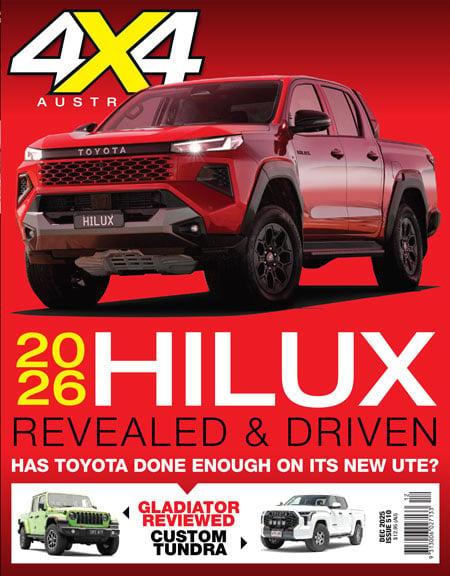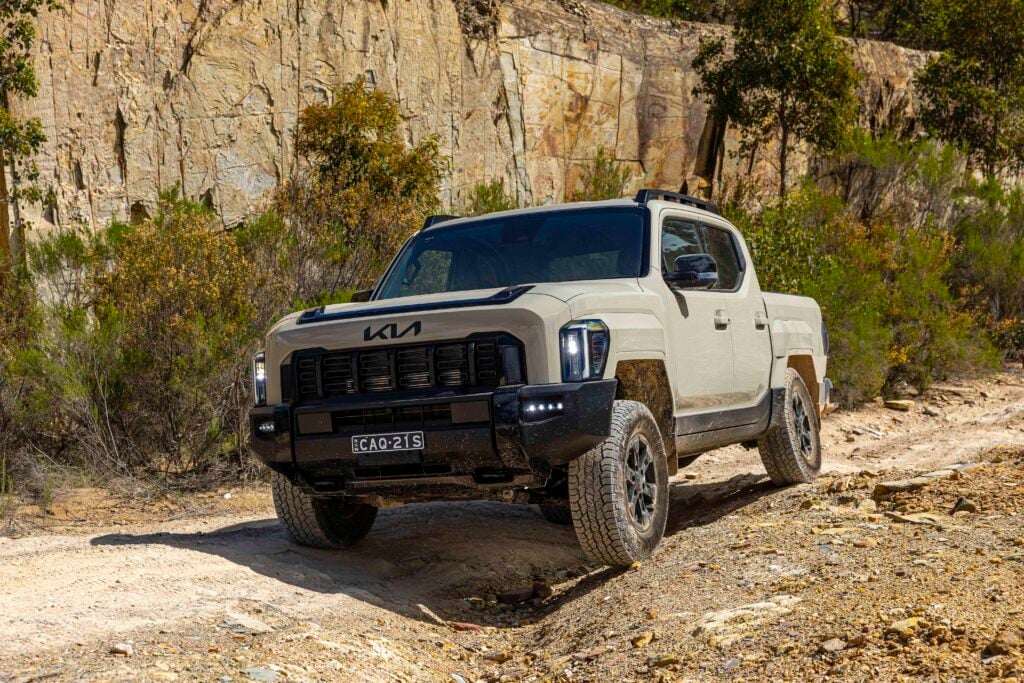Things we like
- Great price
- High level of equipment
- Strong on-road performance
- Front and rear locking diffs
Not so much
- Heavy
- Annoying driver monitor
- Spare tyre in tray
Great Wall Motors (GWM) has joined BYD by launching a plug-in hybrid 4×4 ute to the Australian market, but unlike the BYD Shark, the Cannon Alpha PHEV is a proper 4×4 with genuine off-road capability.
GWM has created its PHEV on the existing platform of the Cannon Alpha which is a slightly larger and better-equipped version of the Cannon ute. The Alpha is 5445mm long (35mm longer than Cannon Ute), 1991mm wide (57mm wider than Cannon Ute) and 1924mm high (38mm taller than Cannon Ute). The wheelbase of 3350mm is longer than that of a Cannon Ute by 120mm.
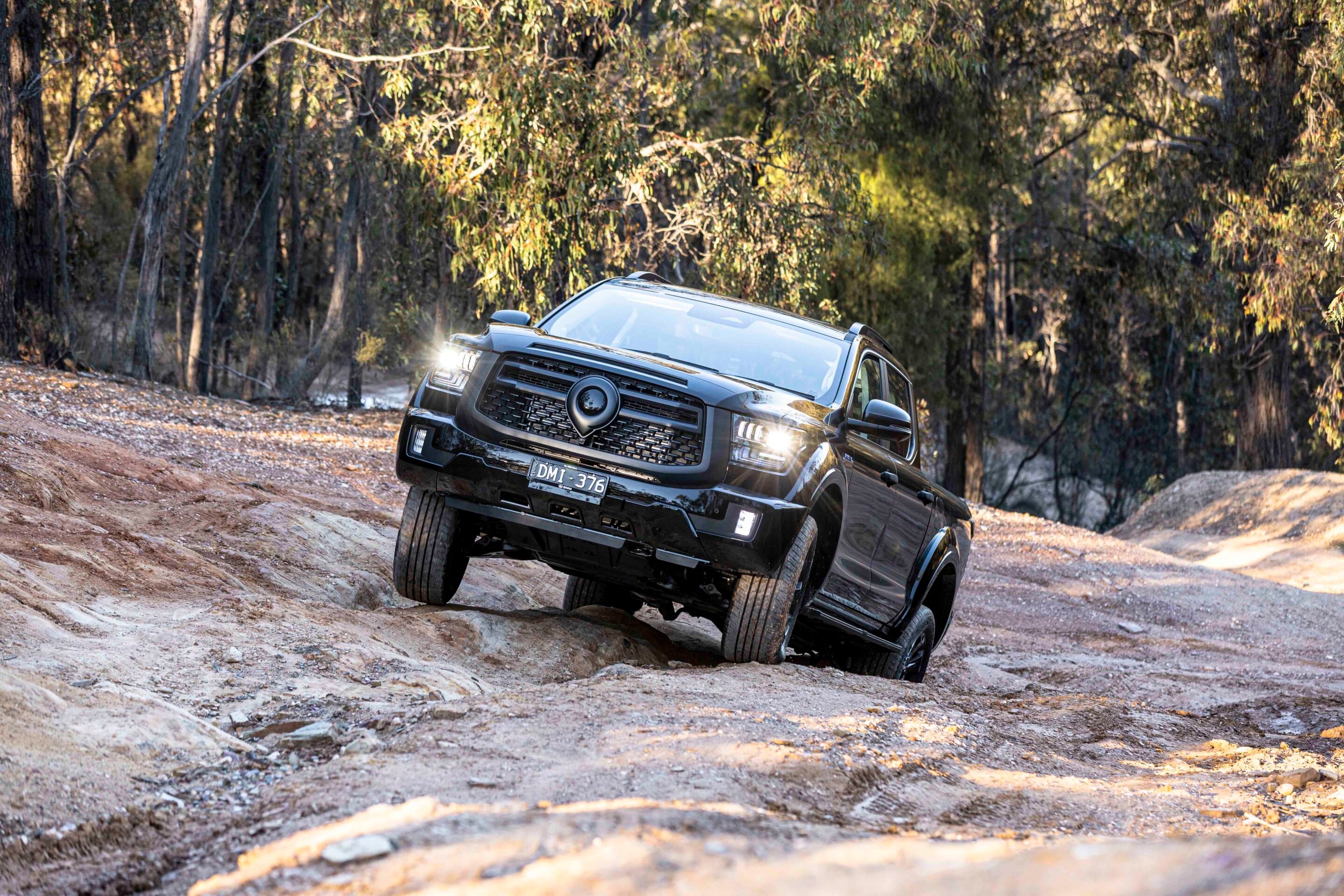
GWM released Australia’s first hybrid EV 4×4 ute in Australia in the middle of 2024 and this updated model is a plug-in version of that vehicle. GWM still offers the hybrid model as well as diesel-fuelled variants and now the PHEV. Two specification grades are offered – Lux and Ultra – and we have the Ultra PHEV on test here.
The big difference between the GWM and BYD utes is that the Cannon Alpha has a more conventional drivetrain with a nine-speed automatic transmission, dual-range transfer case and a tailshaft leading back to a live rear axle. In the case of the BYD Shark 6 the only connection between the front and rear axles is electronic – there is no mechanical connection – which limits its off-road ability.
JUMP AHEAD
Powertrain
The Cannon Ultra PHEV driveline comprises a turbocharged 2.0-litre petrol engine and an electric motor that is located within the transmission bell-housing along with the torque converter. Combined they deliver an output of 300kW and 750Nm and this is fed to a dual-range, on-demand 4×4 system.
The ICE engine makes 180kW and 380Nm on its own but when combined with the electric motor produces outputs exceeding that of most conventional ICE powered 4×4 utes. On and off road, the combined output gives the GWM impressive acceleration despite its 2800kg weight. Torque is king and the Cannon launches like it was shot out of an… umm, cannon. It even has a specific launch mode for quick getaways after you’ve waded through the menus to find and engage it.

GWM claims that the Cannon Ultra has an EV range of 115km and a combined ICE and EV touring range of 1060km utilising the 75-litre petrol tank. The system has multiple modes to prioritise drive to your conditions with EV priority, full EV and intelligent modes.
Charging times from a DC charger are claimed to be 24 minutes from 30-80 per cent charge. There’s comprehensive info on the multimedia screen on the charging status and time, and you can also check it remotely via the GWM app. Filling the fuel tank with petrol is always simple and quick.
On the road
The Cannon’s acceleration is brisk, but you do feel its heft. Once up to speed it cruises smoothly and quietly whether in EV mode or when the ICE unit is in operation. An annoyance I found was the way the vehicle decelerates so much whenever you lift off the accelerator. This is because of the regenerative charging action of the hybrid powertrain , but if I wanted the Cannon to slow so much I’d use the brakes and not have the system doing it for me.
A further annoyance is the driver monitor that constantly harangues you. You can disable it, but again you have to go through the screen menus every time you start the vehicle to shut it up. On gravel surfaces the Ultra rides nicely over small corrugations and ruts inspiring confidence in the chassis and handling. It’s firm while still compliant enough to provide a comfortable ride.

Off the road
Off road and in low range the ute makes easy work of uneven terrain and lifting wheels are countered by fast-acting ETC without having to engage the Ultra’s front and rear locking diffs. That’s right – the Cannon Alpha has front and rear lockers standard from the factory, something you can only find in a Ranger Raptor elsewhere in the midsize ute class. The ETC is a bit noisy in its operation and not as smooth as the best systems out there but it gets the job done.
The wishbone front end has the usual IFS limitations causing the aforementioned wheel lift while the leaf-spring live-axle rear articulates okay, if not amazingly. Combined with the front and rear lockers, the overall off-road package of the Cannon Alpha is pretty impressive.
| Off-road specs | |
|---|---|
| Approach angle | 28.5 |
| Ramp-over angle | 19 |
| Departure angle | 23 |
| Ground clearance | 210mm |
| Wading depth | 800mm |
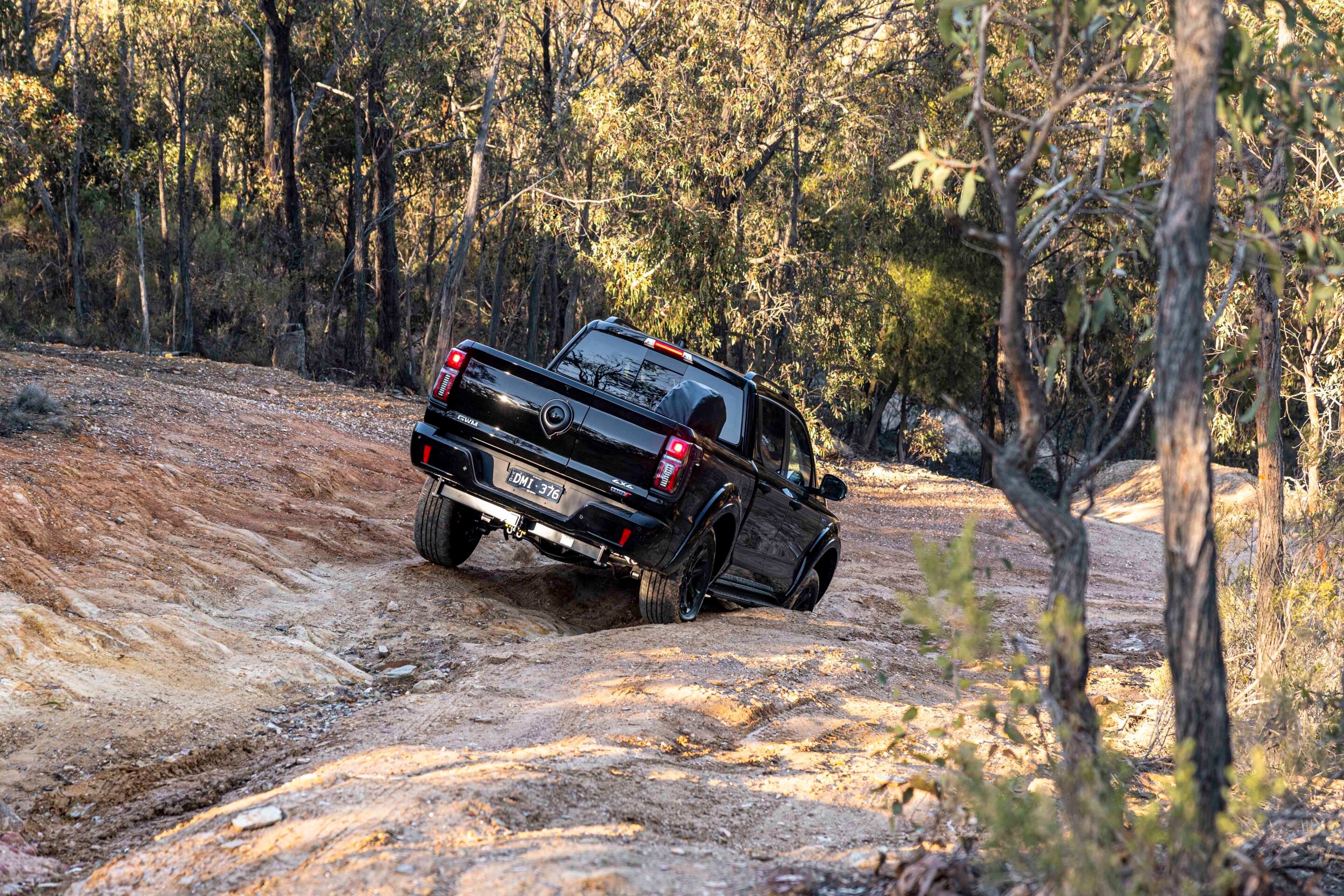
Interior
Also impressive is the array of standard equipment inside this ute. The 14.6-inch infotainment screen takes pride of place in the centre of the dash and is both big and easy to see and use. It is home to all the usual system settings, controls, Apple Carplay and Android Auto mirroring functions.
Unfortunately the only volume adjustment is via a slow-acting toggle on the steering wheel and the cabin temperature adjustment is all within the screen. This is annoying and somewhat dangerous as, if you like me, you drive with Carplay on most of the time, to adjust the cabin temperature you need to go into another menu, find the appropriate control and make the adjustment. When doing this the driver monitoring system will tell you to pay attention to driving and drive carefully, which is super annoying.
The Napa leather-covered seats are ventilated, heated front and rear with massaging on the front pews. The rear seats also have an electric slide and recline function that reduces the angle of the upright backrest that is customary in double-cab utes however, if a tall driver has his/her seat all the way back, it doesn’t leave a lot of space for the seat behind to slide forward and recline. But even in a normal, upright position there’s plenty of leg and headroom in the back for most passengers.
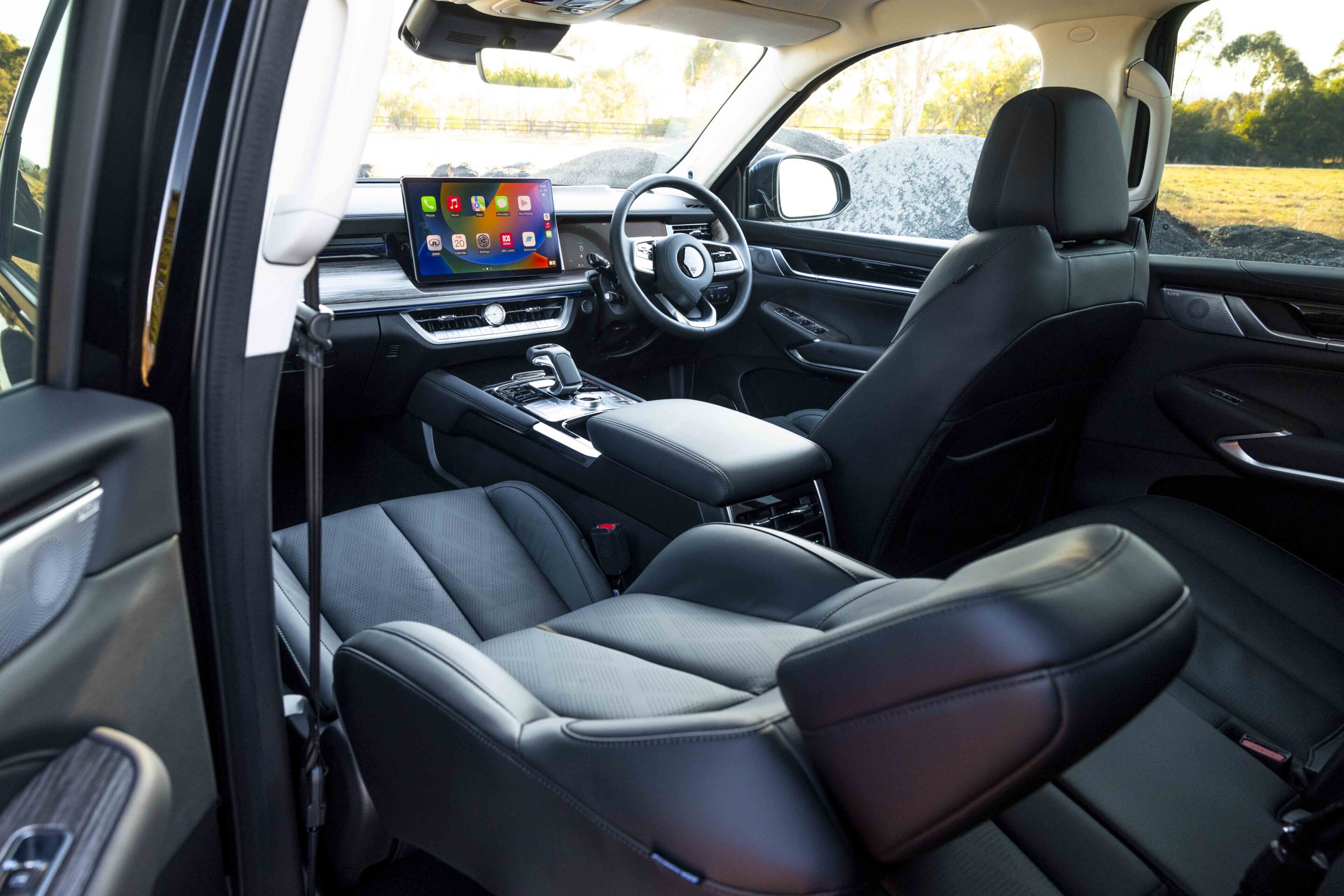
How practical is it?
Like the locking diffs, the level of features in the Ultra is a rare find in the midsize ute segment and one that is appreciated. Also appreciated is the large cargo tub that has a unique tailgate setup that can be opened in the traditional drop-down manner or swing-out via a vertical split.
The tub offers 1100mm between the wheel arches but in the PHEV, the spare wheel is mounted in the tub as the EV battery pack takes up the space below the tub where the spare would normally reside. There’s also a power outlet in the back to run power tools and accessories off the Cannon’s battery. On our drive, the vinyl cover over the spare tyre kept blowing off so we ended up removing it all together.
Important for many users is towing capacity and the Cannon PHEV retains the non-EV model’s 3500kg maximum braked towing capacity. Not so good is the 685kg payload which means that owners will have to be cautious with how much they load into their Cannon, especially if they have anywhere near the maximum 350kg on the towbar.
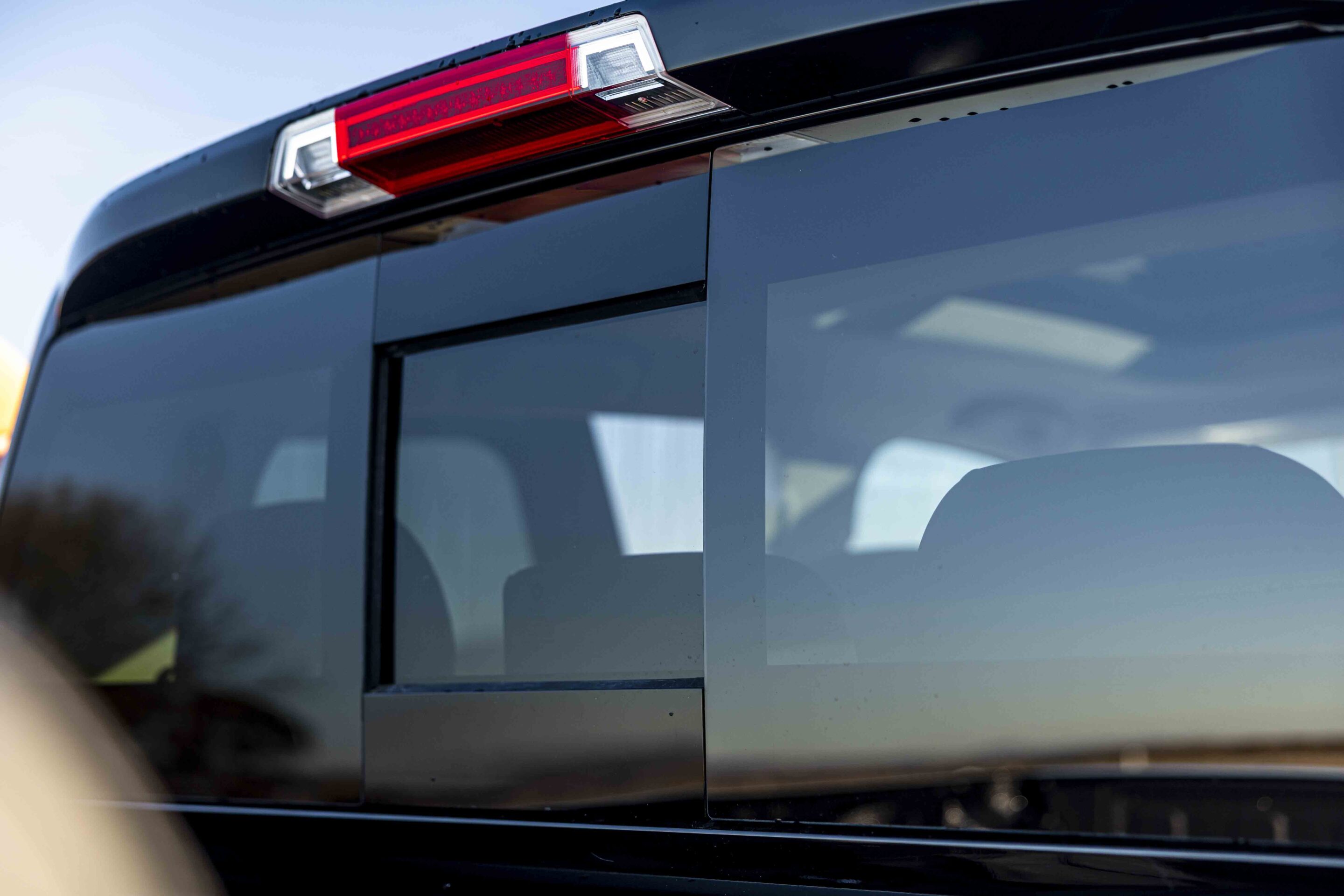
Safety and warranty
The Cannon Alpha has all the standard ADAS and safety features needed to give it a 2025 five-star ANCAP rating. It’s just a shame that the driver monitor system is so intrusive and annoying.
The GWM comes with a seven-year factory warranty, seven-year roadside assistance and capped-price servicing, and an eight-year warranty on the lithium EV battery pack.
Verdict
The GWM Cannon Alpha PHEV gives buyers wanting an electrified ute an option that delivers hybrid fuel efficiency with genuine off-road capability in a luxurious and spacious vehicle for a very attractive price and ownership package.
It’s a package that hasn’t been available in Australia until now, and until we spend some time in the Ranger PHEV, it offers the best all-round combination of all the key elements; this is especially so in the top-spec Ultra trim with the $67k price. For reference, the Ford Ranger PHEV will start at $72k and go up to $87k for the top-spec model.
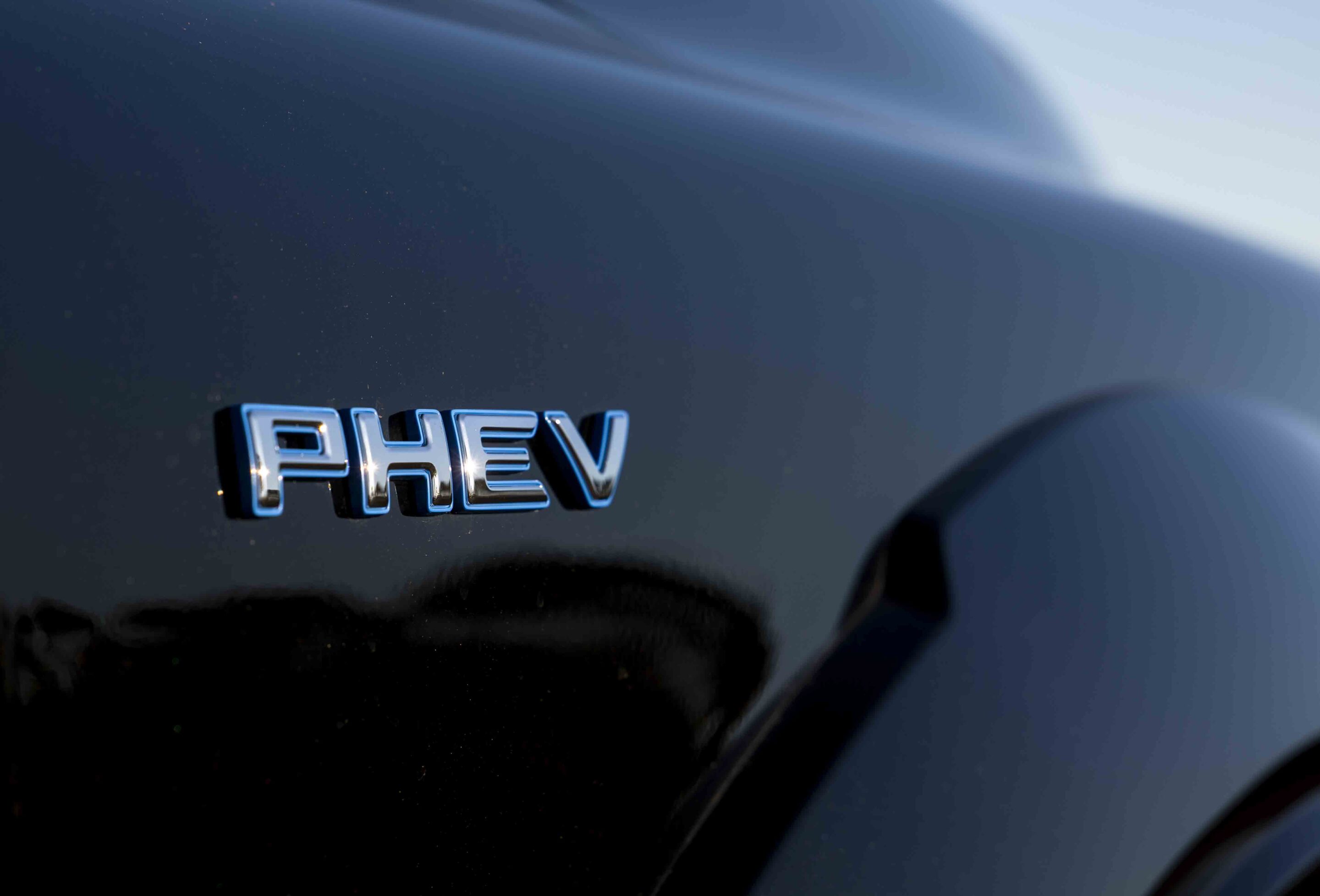
Specs
| GWM Cannon Alpha PHEV specs | |
|---|---|
| Price | $66,990 |
| Engine | Petrol ICE with electric motor |
| Capacity | 2.0L |
| Max power | 300kw (combined) |
| Max torque | 750Nm (combined) |
| Transmission | 9-speed automatic |
| 4×4 system | On demand/dual range |
| Construction | 4-door ute on ladder frame chassis |
| Front suspension | IFS, double wishbones, coil springs |
| Rear suspension | Live axle with leaf springs |
| Tyres | 265/60R18 on alloy wheels |
| Kerb weight | 2810kg |
| GVM | 3495kg |
| GCM | 6745kg |
| Towing capacity | 3500kg braked |
| Payload | 685kg |
| Seats | 5 |
| Fuel tank | 75L |
| ADR fuel consumption | 1.7L/100km combined hybrid |
Things we like
- Great price
- High level of equipment
- Strong on-road performance
- Front and rear locking diffs
Not so much
- Heavy
- Annoying driver monitor
- Spare tyre in tray
We recommend
-
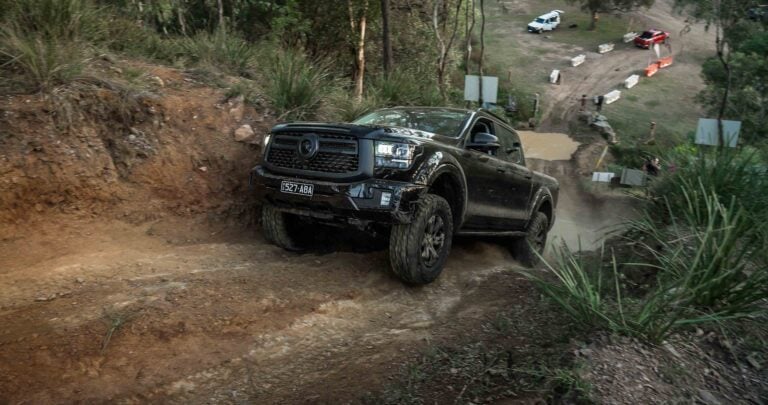 News
NewsGWM range successfully conquers Beer O’Clock Hill; Cannon Alpha first ever PHEV to reach the summit!
GWM makes history as its fleet, including the Cannon Alpha PHEV, conquers the infamous Beer O’Clock Hill
-
 News
NewsGWM Cannon Alpha PHEV and Tank 300 diesel earn five-star ANCAP safety ratings
GWM’s latest entrants to Australia secure top ANCAP safety scores
-
 Reviews
Reviews2024 GWM Cannon Alpha Ultra Hybrid: Off-road review
GWM has brought the first hybrid powertrain to the 4x4 ute segment, and we've driven it off-road



